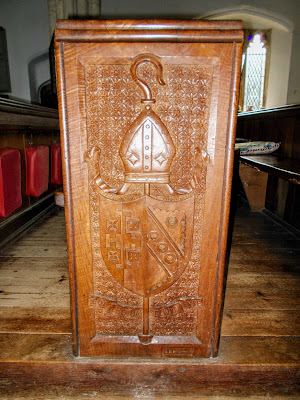William Smith was a civil engineer, geologist and a pioneer in the science of stratigraphy. He drew up the first geological map of England and Wales, which was published in 1815.
William Smith was born in Churchill, Oxfordshire on 23rd March 1769. In 1787 he became assistant to the land surveyor Edward Webb in Stow-on-the-Wold. In 1791 Webb sent him to survey the land belonging to Lady Elizabeth Jones around Stowey near Bishop Sutton. He lodged at Rugbourne Farm in High Littleton and from 1798-1810 he lived at Tucking Mill between Midford and Monkton Combe. He carried out underground surveys of coal mines in the area, which set him thinking about rock strata. In 1793 he was asked to survey routes for the proposed Somerset Coal Canal. In 1794 he was sent on a fact finding tour of the canals and mines in the Midlands and the north of England and used his site visits to further his knowledge of rock strata.
Work on the Somerset Coal Canal began in July 1795 and the excavations enabled William Smith to study the local strata. In 1799 he began to draw up maps and cross-sections of the local strata. After a disagreement over the construction of a caisson at Combe Hay, he was dismissed from his job as engineer with the canal company in June 1799.
William Smith then set himself up as a land surveyor in partnership with Jeremiah Cruse at Trim Bridge in Bath. He undertook land drainage work around Bath and Wiltshire. From 1801-1812 he travelled all over the country for work as a land & mineral surveyor and land drainer. At the same time he collected more information about rock strata. In 1803 opened an office in London and from 1805 he displayed his fossil collection there.
In 1812 the London-based map maker John Cary offered to publish Smith's geological map. The first edition was published in 1815 and updated editions were published until 1819. Sales of Smith's map dropped when a rival map was published by the Geological Society in 1820. Smith was in financial difficulty from 1819 and spent 10 weeks in a debtors' prison. He was forced to sell his fossil collection (to the British Museum) and personal library to pay off some of his debts.
In 1820 William Smith moved to Yorkshire and worked as a geologist with his nephew John Phillips. In 1828 he became land steward to Sir John Johnstone at Hackness in North Yorkshire. He produced an accurate and detailed geological map of the Hackness estate, which was published in 1832. In the same year he was given a government pension of £100 a year and the Geological Society presented him with their first Wollaston medal in 'recognition of his being a great and original discoverer in English Geology'. In 1834 he moved to Scarborough. He died on 28th August 1839 in Northampton while on his way to a British Association for the Advancement of Science meeting in Birmingham and was buried at St Peter's Church in Northampton.
In 1888 a plaque was erected at Tucking Mill stating that William Smith had lived there. When the mill was demolished in 1927, the plaque was mislaid. It was rediscovered in 1932 and re-erected outside Tucking Mill Cottage by the Geological Society and the Bath Royal Literary and Scientific Institution. However it is now believed that he actually lived in Tucking Mill House, which is 100 metres further east.
In 2006 Sustrans commissioned the sculptor Jerry Ortmans to make a sculpture to commemorate William Smith's achievements. His work, Stone Column, is on display on the Colliers Way to the east of the village of Wellow. The layers are (from the top to the bottom) Chalk, Forest Marble (two blocks), Great Oolite, Inferior Oolite, Blue Lias, White Lias (two blocks), and Pennant Stone.
























